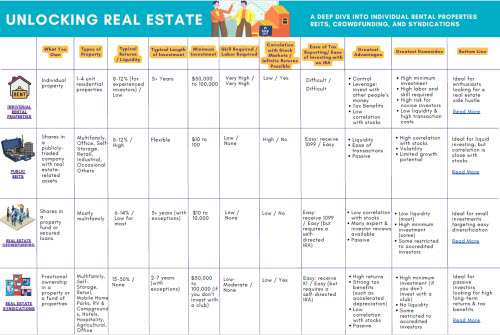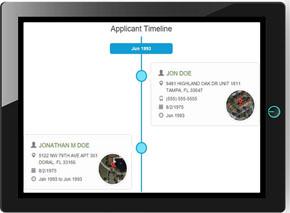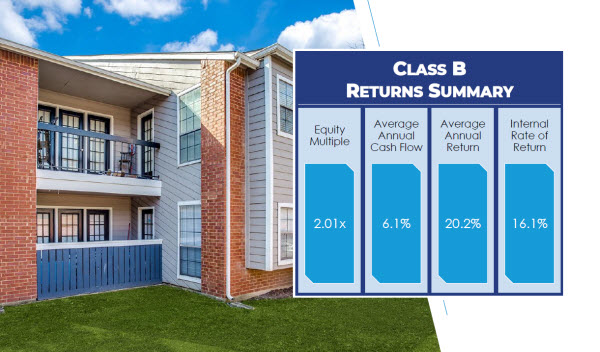
Image Credit: Kgbo under the Creative Commons Attribution-Share Alike 3.0 International license
Imagine what your life would look like with no rent or mortgage payment.
A smile-worthy thought, eh? Especially given that 11 million Americans spend half (!) of their income on rent. Among homeowners, a shocking number spend a full third of their income on their mortgage.
Enter: house hacking. The strategy isn’t complicated: you buy a multifamily property, move into one of the units, rent out the other(s), and let the renters pay your mortgage. (You can even use income suites and other house hacking strategies to live for free in a single-family home!)
There’s no catch. You can use a normal residential mortgage (conventional, FHA, VA, etc.) to buy a property with up to four units — more on financing shortly.
Intrigued? Here’s how a 27 year-old insurance underwriter with no real estate experience house hacked and now lives for free.
Meet Tim
Tim Puffer lives in East Lansing, Michigan. Until a year ago, he considered himself an everyday guy working a normal job. But he began to be intrigued by the idea of real estate investing and passive income.
Except he had no experience, either in real estate investing or in home improvement and renovations.
Undeterred, he began reading up on investing. He quickly realized that he could house hack, and didn’t need a massive amount of cash.
He started driving neighborhoods around town, until he settled on a few neighborhoods he liked. In particular, he liked the look of Forest View.
Tim’s Target Neighborhood
Forest View is a quiet suburban neighborhood, a short drive from Michigan State University. The campus golf course is right around the corner, never a bad thing.
Traffic is quiet, kids play outside, there are probably rainbows every morning and butterflies all year round.
But we’re not talking about a hoity-toity crowd. Forest View is a quintessentially average Midwestern suburb. Single-family homes cost between $90-150,000. There are mid-range condos, and there’s a family-friendly apartment community of around 100 units.
In other words, housing is affordable, and the residents are undeniably working- and middle-class.
“We actually had a few MSU professors look at the unit to rent, and even MSU basketball’s new head trainer!” Tim recounts. “They didn’t rent from us, but I knew I had a solid location because of that.”
Finding a Property
As Tim drove the streets of Forest View and his other few target neighborhoods, he jotted down the addresses of every multifamily property he could find. He particularly looked for properties where it appeared one of the units was unoccupied.
He then wrote handwritten letters to the owners.
The veterans among you might know this strategy as “driving for dollars.” It works more often than you’d think — it’s a strategy we cover in our free mini-course on creating passive income from rentals.
Free Masterclass: House Hacking & Rentals to Retire Early
Sure enough, the owner of a duplex in Forest View called Tim after receiving the letter. His ex-stepson lived in one of the units, he was retiring, and ultimately just didn’t want to fuss with the property any more.
The property was a two-story duplex, with each side boasting 1,400 square feet, 3 bedrooms, 1.5 bathrooms and a garage. In the rear lies a wooden patio, and about a half-acre of yard surrounded by trees.
Tim liked what he saw.
Purchase & Financing
The seller and Tim agreed on a purchase price of $119,500, with a seller concession of $4,500 toward Tim’s closing costs, and $1,000 toward a new hot water heater.
Tim shopped around to compare mortgage loan pricing (try Credible to do the same). With his credit and income, he found an FHA loan to be the best deal, financing 96.5% of the purchase price. The seller concession covered all Tim’s closing costs, so all Tim had to come up with at settlement was his 3.5% down payment at $4,182.50.
Want to follow in Tim’s footsteps, but worry that multifamily properties are too expensive for your income to qualify for, in your market? Keep in mind you can use the rent payments from the other unit(s) to help you qualify.
Which fully captures the spirit of house hacking: other people are adding their income to cover your ownership costs.
Renovation
If $119,500 with $5,500 in seller concessions sounds like an unbelievable steal, bear in mind that the property was somewhat dated. Tim gave notice to the other renters, who in his words “were not clean people.” After they moved out he went in and got to work.
Over the course of several months, Tim replaced the flooring, rear deck, central air conditioning condenser, windows, hot water heater, kitchen appliances, cabinets and counters.
Total cost? $17,000. And that includes tools — Tim didn’t have any, because he’d never done any home improvement or renovation work before!
He did much of the work himself, but he brought in outside contractors for help with the air conditioning, windows, and hot water heater, a deck builder to construct the rear deck.
“I had not previously done any flooring, good painting, or trim work in my life. But I’m a d@#n good painter now!”
Where did Tim get the money, for all these renovations?
Tim had some cash leftover at settlement, but not enough. He drew on his credit cards, and refinanced his vehicle to pull cash out. When the renovations were complete, he pulled cash out using a HELOC (try Figure for five-day closings), to pay off his credit card and vehicle loan. The property re-appraised for an after-repair value (ARV) of $162,500.
Monthly Cash Flow
Tim’s FHA loan left him with a mortgage payment of $951, at a lean 3.75% interest rate.
That $951 payment includes principal, interest, property taxes, insurance and MIP (mortgage insurance premium). The $81 MIP is unfortunately now a permanent fixture in FHA loans; no matter how much of the loan Tim pays off, he’ll carry that MIP payment until the day the property is paid in full.
His renters next door pay $1,140 in monthly rent, leaving $189/month to cover maintenance, repairs, CapEx, vacancy rates and Tim’s property management labor, all before Tim has to reach into his own pocket to pay a cent for his own housing.
Tim did a great job calculating the property’s cash flow, and now enjoys the benefits. He effectively lives for free. But because Tim is disciplined, he’s putting all of the money he would have spent on a housing payment aside for future investments.
Use our free house hacking calculator to run the numbers on any house hack, or our free rental income calculator for non-owner-occupied rental properties.
(article continues below)
What Didn’t Go According to Plan?
Tim’s story is no fairy tale. As someone new to home repair and renovation, Tim made some mistakes.
Mistake #1: the countertops. “We purchased the countertops before the cabinets, but the cabinets ended up being slightly smaller. We had to purchase a completely new countertop and eat the cost.”
Not a good day around the duplex, I’m sure. Unfortunately it got worse when the city’s inspectors started waving red tape over patio permits.
“I didn’t pull a permit for the rear deck when we built it. When the city rental inspector came out, they said I needed one, and will start being heavily fined without it.
“It’s taken me about a month to find a contractor willing to put the permit in his name, do the site plan drawings, and take on all of the other nitpick items to appease the rental inspectors.”
City inspectors don’t have a sense of humor when you fail to cross every T and dot every I. They will lay their vengeance upon thee like Samuel L. Jackson in Pulp Fiction if you don’t toe their line.
What about the renters? Any trouble with them?
Tim says they’ve been pretty easy, both as neighbors and as renters. He hasn’t changed much about his lifestyle: “Just small things — I like to play music when I get home from work while I’m doing things, and they have an 18-month old. So I just wait until they are up from their nap at around 5:15.”
Tim’s Advice for Other Beginners
When I asked Tim about what advice he had for others considering house hacking, he didn’t hesitate.
“Know your cash flow numbers! I originally planned conservatively for $950 in rent, which would have had me contributing more. While I ended up being able to charge more for the next-door unit, I also failed to factor in some of the repair costs, such as insulation and gutters.”
Tim went on to stress that living as neighbors with his renters has been both easy and surprisingly pleasant. He’s even shared the occasional backyard bonfire with his new neighbors!
“With that being said, if you have to enforce the lease rules – do so! You are running a business!”
One reason Tim’s had such a smooth experience with his tenant-neighbors is that he invested time and effort on tenant screening. Beyond running tenant screening reports, Tim contacted employers and personal references, and verified past rental history with former landlords. He knew that his house hacking experience would be made or broken based on the quality of his tenants.
Is House Hacking for Everyone?
Well, nothing’s for everyone; perhaps the idea of being within a mile of your neighbors is anathema to you.
Sharing a wall with neighbors is no real burden to Tim, but he’s made other sacrifices. He spent months using his free time to work on his property, while his friends were going on dates, throwing barbecues, and generally having fun. Granted, Tim could have paid a contractor to do all the work for him, but he would have missed out on valuable experience. Not to mention it would have cost him a great deal more.
And then there were the merciless city inspectors, standing by at every turn to point out exactly which form Tim failed to fill out perfectly. Not everyone is cut out to constantly battle with bureaucrats. I’ve had my own nightmares with them, I can assure you.
But for anyone looking to supercharge their savings rate and hop on the express train to financial independence, house hacking is a great way to save money. It’s an easy, affordable way to kick off your real estate investing career.
Any parting advice, Tim?
“Don’t talk about it; be about it! You can only talk about investing in real estate for so long before you need to take action!”
A man after my own heart.
Have you ever considered house hacking? What questions or concerns are stopping you?
























I love love LOVE this. Of course, my husband might have something to say when I tell him tonight that I want to buy a multifamily building and move into it. But that’s another matter 😉
Haha, I hear ya Chelsea!
Been saving up to buy my first home. Was planning on getting a roommate or two to help pay, but this is a way better plan. This is why I love this blog, every time I come by I feel like I leave a little cleverer and have a better grasp of investing strategy.
Thanks Theo! We try 🙂
Just let us know if there’s anything we can do to help, as you work on buying your first property!
The 11 million people you refer to is 3% of the population
If you’re including infants and toddlers and each adult individually. It’s not a trivial percentage of renter households however.
The only thing that stops me is finding good tenants. I had many bad experience and I no longer want to add more drama. Any tips on how to overcome my dilemma?
Hi Ana, it just comes down to thorough, almost aggressive tenant screening. You need to check each applicant’s history extremely carefully, including not just credit and criminal checks but also speaking with past landlords, employers, and so forth.
I have my reservations. I think it’s going to be problematic when you treat your tenants your friends. Perhaps settings up a boundary or proper payment commitment is a necessary to keep a fruitious household. Just my two cents.
I hear you Lester! Important to set boundaries.
Ideal for beginners in real estate investing. Good case study!
Thanks Rusty!
The long-term issue with this is that both units had a mortgage of $951, and he split the property in half and charged someone else $1140 for half.
Now he has “two” properties to rent for $1140 each…. so $2280.
A property that used to cost $951 now costs $2280. Other properties start to rise to meet that new price.
He goes to sell, and the next person pays $2280… and rents half the property at $1500. So now the property is $3000 a month.
Repeat until we have rent costing $4000 a month for half the property.
Things cost what people are willing and able to pay for them. When market prices and rents get too divorced from local incomes, you enter a bubble, and prices and rents crash back down. They’re tied to local economic fundamentals, and don’t just float freely along, untethered to the local economy.